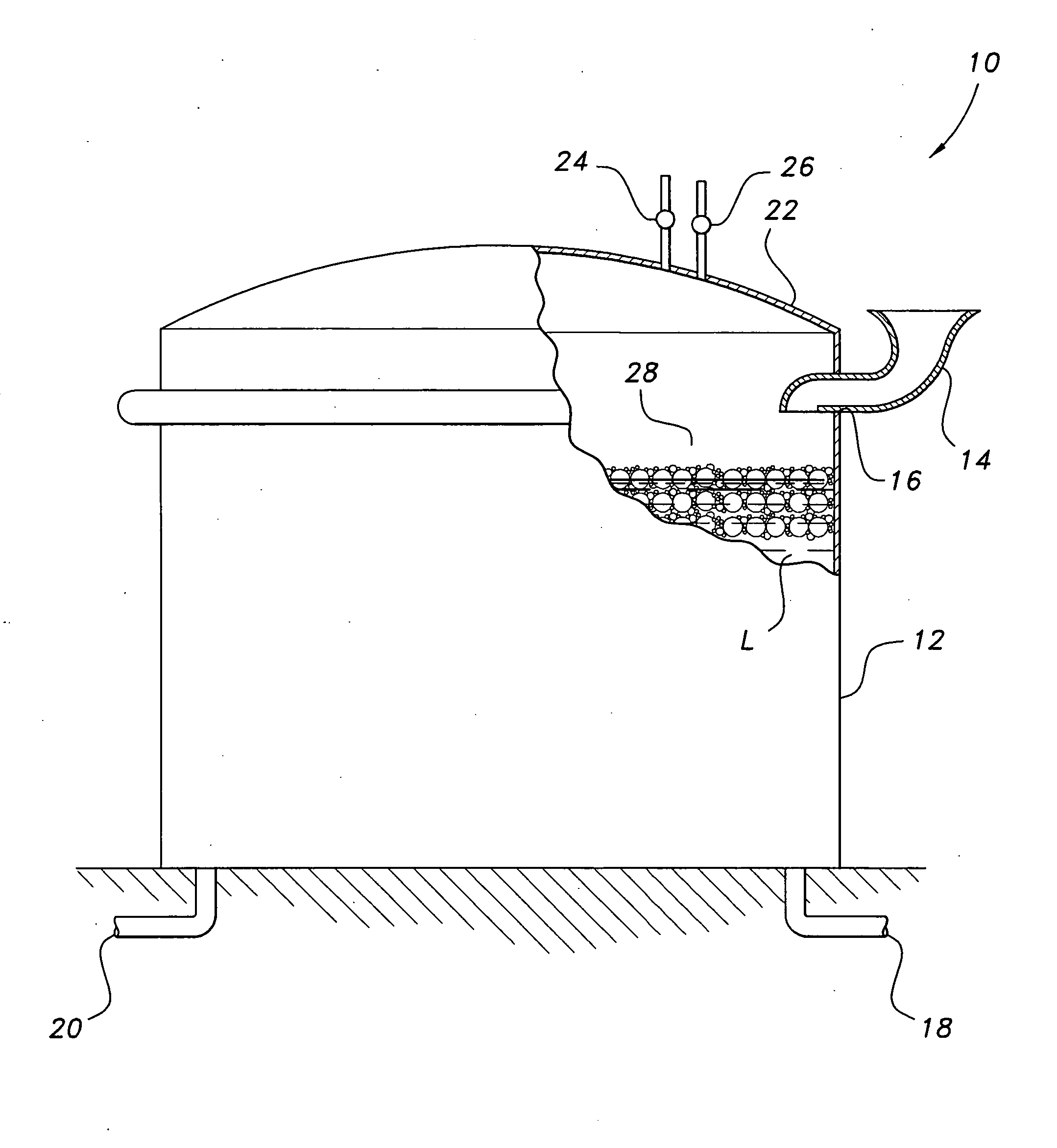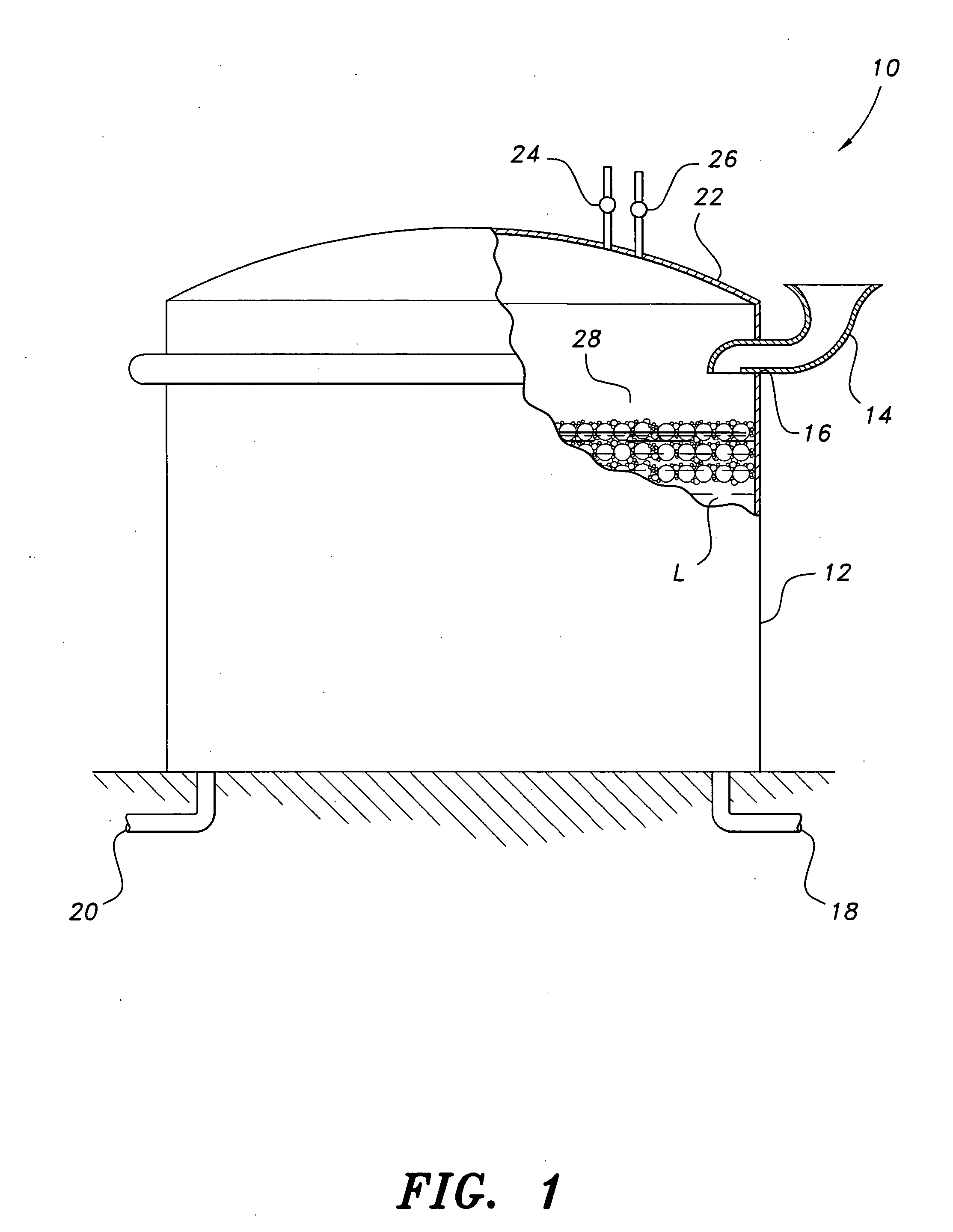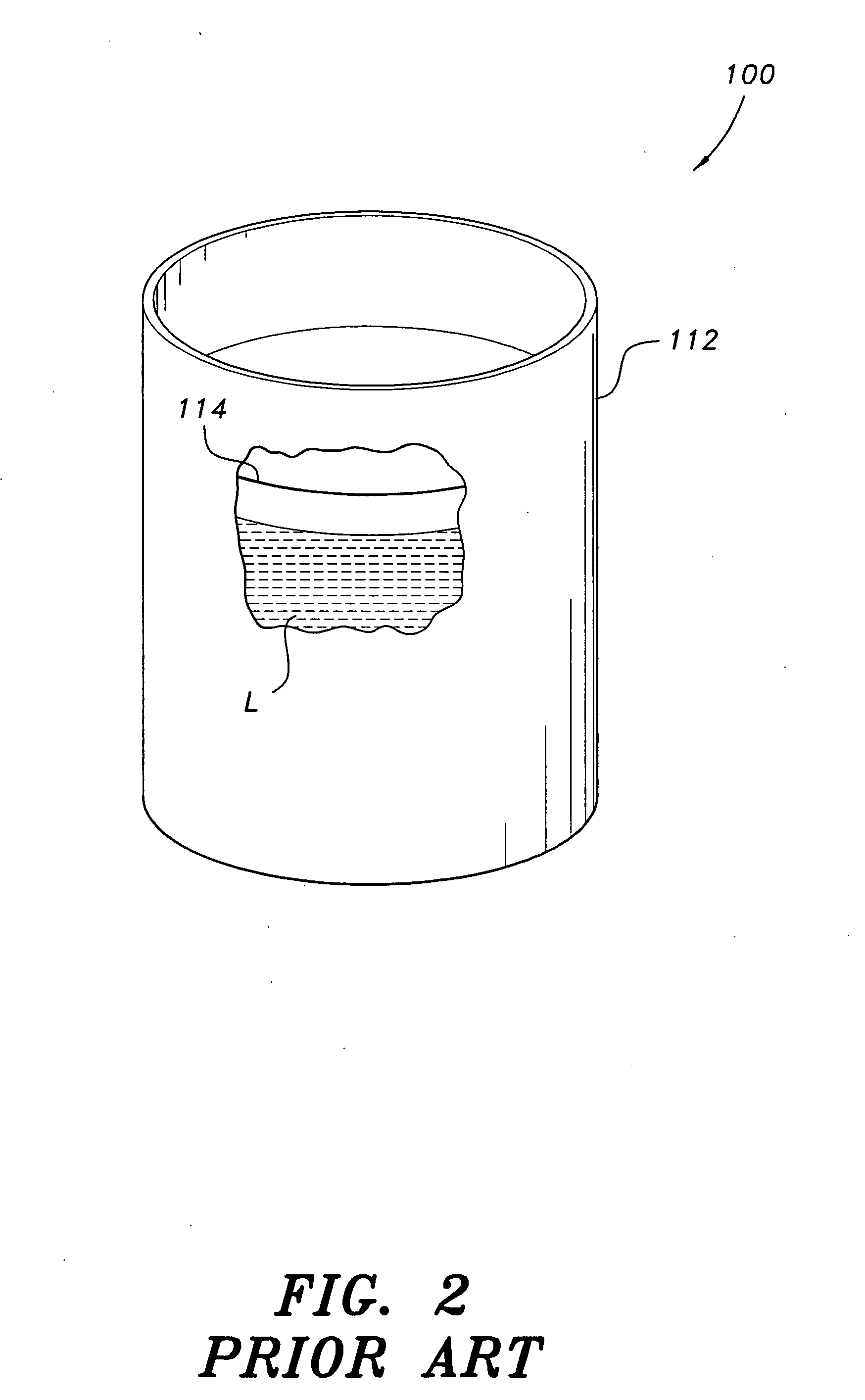Vapor barrier for flammable liquid storage tanks
a technology for flammable liquids and storage tanks, which is applied in the direction of transportation and packaging, mechanical equipment, and discharging methods of containers, etc., can solve the problems of igniting an explosive burning of vapor, loss of buoyancy, and use of plastics that are not intended for permanent repair
- Summary
- Abstract
- Description
- Claims
- Application Information
AI Technical Summary
Benefits of technology
Problems solved by technology
Method used
Image
Examples
Embodiment Construction
[0020]Referring to FIG. 1, an exemplary storage tank 10 has a vapor barrier for flammable liquid storage tanks deployed therein, the barrier being designated generally as 28. In addition to simply preventing the escape of vapor, the vapor barrier further provides fire suppression capabilities, and it should be understood that the vapor barrier may be applied to storage tankers, vessels, barges or any other type of container for flammable liquids. The liquid storage tank 10 is shown for exemplary purposes only and includes elements conventionally found in storage tanks for flammable liquids, such as oil, gasoline and the like. The housing 12 may be formed from steel or the like, as is conventionally known, and is either supported above the ground surface, or is at least partly buried in the ground. The tank is provided with a cover 22 and with pipes 18 and 20 for admitting flammable liquid L into the open interior region of housing 12, and for the withdrawal thereof when required. It...
PUM
 Login to View More
Login to View More Abstract
Description
Claims
Application Information
 Login to View More
Login to View More - R&D
- Intellectual Property
- Life Sciences
- Materials
- Tech Scout
- Unparalleled Data Quality
- Higher Quality Content
- 60% Fewer Hallucinations
Browse by: Latest US Patents, China's latest patents, Technical Efficacy Thesaurus, Application Domain, Technology Topic, Popular Technical Reports.
© 2025 PatSnap. All rights reserved.Legal|Privacy policy|Modern Slavery Act Transparency Statement|Sitemap|About US| Contact US: help@patsnap.com



